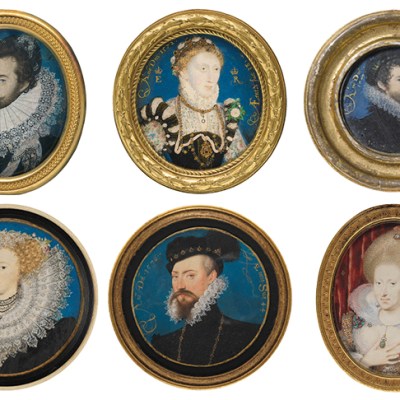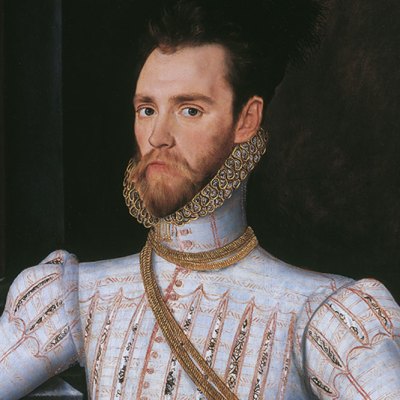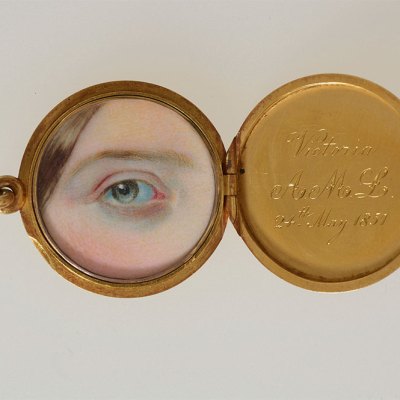Marriage, in the Renaissance, often gave rise to portrait commissions for the leading artists of the day, particularly when the union was a dynastic one. Prospective brides – and, less frequently, prospective grooms – needed to be inspected. The marriage itself might also be commemorated, either by a double portrait or by paired portraits, the latter sometimes fastened together to form a diptych. ‘Painted Love: Renaissance Marriage Portraits’ brings together, in a single room, around 50 of these images, revealing the range and variety of their production in Europe between 1400 and 1600.
Mrs Jane Small, née Pemberton (c. 1540), Hans Holbein the Younger. Victoria and Albert Museum, London
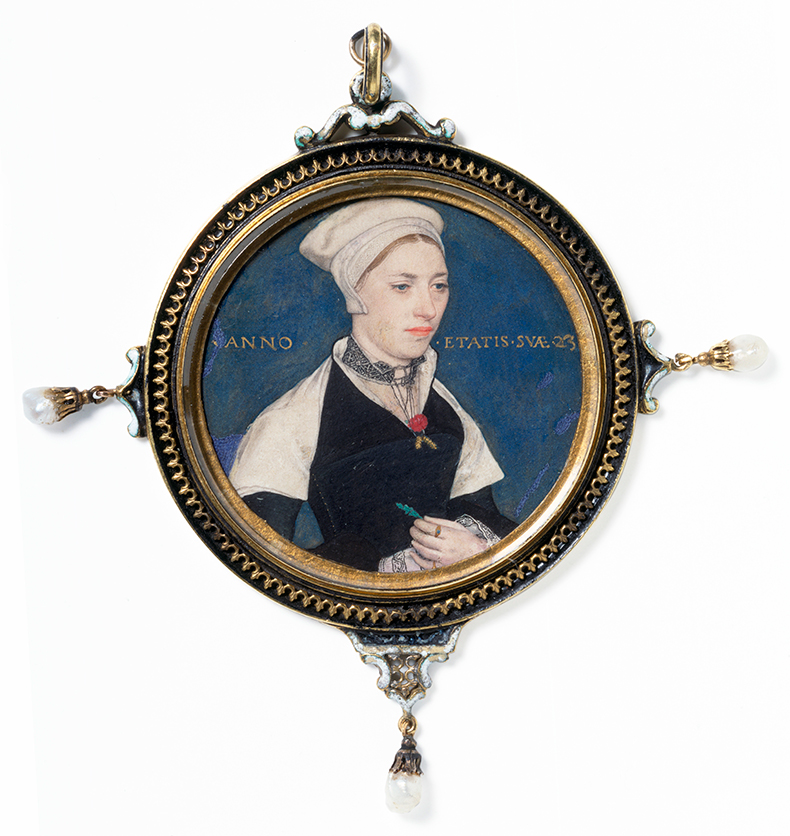
The heart of the exhibition is a group of late 15th- and early 16th-century German paintings on long-term loan to the Holburne Museum from the estate of Bruno Schroder, who died in 2019. Hans Burgkmair the Elder’s double portrait of the wealthy and powerful Augsburg banker Jakob Fugger (‘Fugger the Rich’) and the patrician Sybilla Artzt – commissioned to mark their marriage in 1498 – is one of the jewels in the Schroder Collection; it is the first object the viewer sees in the exhibition. Resplendent in their finery, the couple is shown pivoting towards one another, the 39-year-old Fugger hooking his left hand around his 18-year-old bride’s right arm. As was the convention with such imagery, Fugger is positioned on the viewer’s left (the so-called dominant side), his wife on the right.
Paintings from the Schroder Collection are displayed alongside objects borrowed from a number of major museums and private collections in the United Kingdom – among them, the British Museum, the National Gallery, the V&A and the Ashmolean. Works are grouped thematically under headings such as ‘Royal Marriages and International Alliances’, ‘Italian Renaissance Marriage Portraiture’, ‘English Marriage Portraits’ and ‘Portraiture in the Holy Roman Empire’. Highlights among the loans include several late 15th- and early 16th-century Italian paintings normally in storage at the National Gallery, London, as well as a number of rarely exhibited 16th-century English works from private collections. The latter range from Hans Eworth’s little known and rather austere paired portraits of 1566 depicting the otherwise obscure Richard Wakeman and his wife Joan, here reunited for the first time in about 60 years, to Nicholas Hilliard’s miniatures of Sir Thomas and Lady Catherine Gresley (c. 1574). Unusually, the latter are encased side-by-side in a single bejeweled gold locket, known as the Gresley Jewel, rather than in two separate lockets.
Its title notwithstanding, ‘Painted Love’ is – as the inclusion of the spectacular Gresley Jewel suggests – not just a display of paintings. Several wedding rings are on show, their tiny circumferences a reminder of how young some Renaissance brides and grooms were. One 16th-century Italian gold ring features a bezel in the form of clasped hands; another, a bezel surmounted by a dog, a traditional symbol of fidelity. A 16th-century gold and enamel English gimmel ring is made of up two intertwined hoops, each inscribed ‘AS HANDS BE SHVT SO SEWERLY [surely] KNYT’. The links of a gold necklace enameled in black and white – crafted in Italy in around 1540 – are inscribed ‘UBI AMOR IBI FIDES’ (‘Where there is Love, there is also Fidelity’). Presumably a wedding gift from a groom to his bride, this necklace is similar in design to one depicted in a painting displayed nearby: Bartolomeo Veneto’s Portrait of a Young Lady (c. 1500–10), a work apparently commissioned as part of a marriage contract.
Portrait medal of Leonello d’Este (1444), Pisanello. Victoria and Albert Museum, London
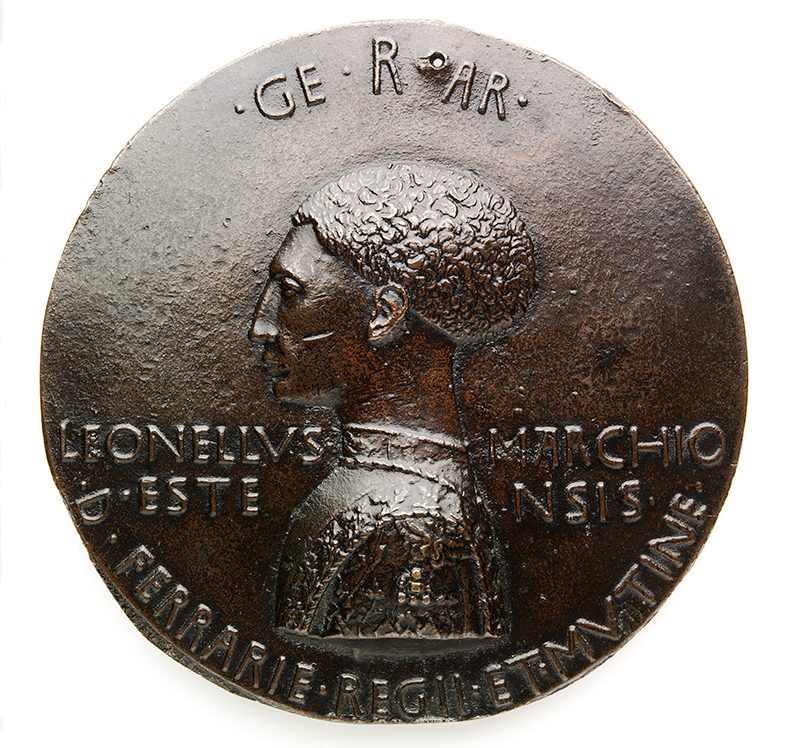
Medals and coins, often struck to celebrate royal and dynastic marriages, also feature prominently. These range from a bronze portrait medal of Leonello d’Este – depicted in profile, in the manner of Alexander the Great, and executed by Pisanello to mark Leonello’s 1444 marriage to the King of Naples’ daughter – to a silver ryal minted in 1565 to commemorate the marriage of Mary, Queen of Scots, and Henry Stuart, Lord Darnley. The obverse of this coin features busts of the couple facing each other. Other objects on display include an ornate silver-gilt double cup of around 1520–25: a traditional south German wedding gift, the design of which, by enabling bride and groom to drink from separate, but interlocking, vessels, was intended to symbolise the couple’s union.
There is one print in the exhibition: a compact double portrait of Israhel van Meckenem, the north German goldsmith and engraver, and his wife, Ida, of around 1490. This extraordinarily intimate, warts-and-all close-up of the unshaven, heavy-lidded Meckenem and his equally weary-looking wife is the earliest known printed self-portrait as well as the earliest known printed double portrait. Like Eworth’s portraits of Mr and Mrs Wakeman, it is a reminder that marriage portraits were not the exclusive preserve of royalty, nobility or those with pockets as deep as the Fuggers’.
It is a shame that there is no publication to accompany this exhibition: a function, presumably, of economically straitened times. But ‘Painted Love’ is well worth a visit, not least for the opportunity to see so many rarely accessible works of art.
Marriage Portrait of Jakob Fugger (1459–1525), and Sybilla Artzt (c. 1480–1546) (1498), Hans Burgkmair the Elder. Schroder Collection

‘Painted Love: Renaissance Marriage Portraits’ is at the Holburne Museum, Bath, until 1 October.

